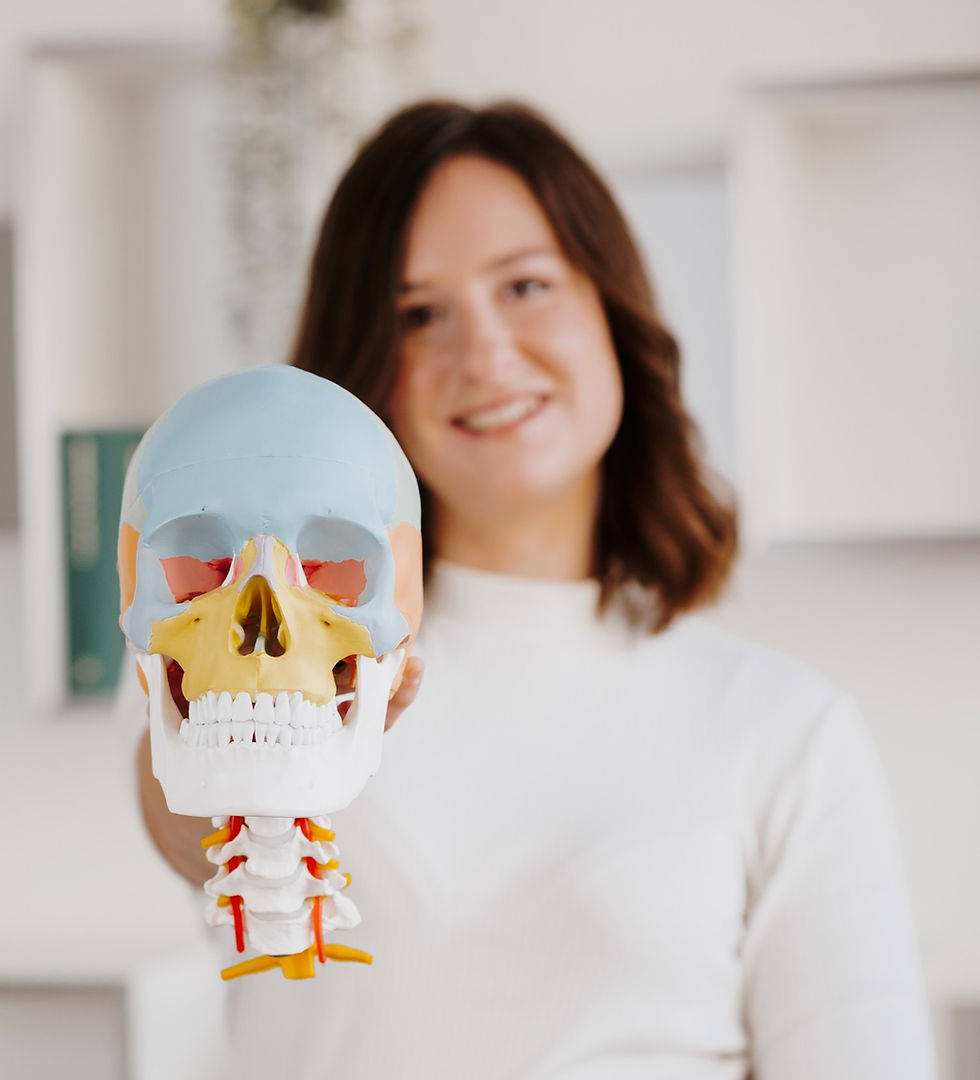How osteopathy can support infantile colic
- Melanie Kirsten

- Oct 21, 2023
- 3 min read
Babies suffering from colic:
Sudden crying for no apparent reason
Visibly tense, overarched back and flushed red skin
Cannot be calmed down despite multiple attempts
Crying usually occurs in the evening hours
Starts around the 7th to 10th day of life
Peaks around the 6th week of life
When do we speak of an infant suffering from colic?
The American paediatrician Morris Wessel presented the following so-called
"Rule of three" for crying duration to tell the difference between normal crying
and to demonstrate infantile colic.
Excessive crying occurs in:
minimum of 3 hours a day
minimum of 3 days a week
minimum of 3 weeks
Causes of excessive crying are multifactorial and therefore complex and in
a few cases due to physical causes.
Not every crying baby has infantile colic. There are also normal reasons for
normal crying:
Hungry?
Fatigue?
Pain?
Boredom or hunger for interaction?
Noise or too many stimuli?
Cold, hot, wet?
Causes of excessive crying include:
Immaturity of neuromotor regulation
psychosocial or family stress
Malposition of the cervical spine, Kinetic Imbalance due to Suboccipital Strain (KISS syndrome)
unspecific regulatory disorders
Bloating, three-month colic
- New blog coming soon - Stay tuned! -
If this excessive crying persists beyond 3-6 months, your child could face further developmental complications. It is not beneficial for the mother-child bond and places an enormous burden on the parents. As a rule, this excessive crying subsides on its own in the first few months of life.
Parents often suspect the cause of their child's excessive crying is due to a physical irregularity, but this is only the case for a maximum of 5% of infants.
Possible physical causes for persistent crying include:
Flatulence and diarrhoea, e.g. in the case of cow's milk intolerance
Recurrent spit up, coughing or pain due to oesophagitis (inflammation of the oesophagus) due to reflux (stomach contents flowing back into the oesophagus)
Inguinal hernias with temporary incarceration (groin hernias with entrapment of intestinal sections)
Pronounced symmetry disorder, is suspected when your child favours only drinking, turning their head, or rolling to one side
Infantile colic babies often have other conditions:
76% additional sleep disorders
33% additional feeding difficulties
23% have both sleeping and feeding problems
Diagnosis and treatment
In order to rule out physical causes for persistent crying, a thorough medical history, physical examination and additional examinations such as laboratory and ultrasound are carried out. You can have this confirmed by your pediatrician or at a colic clinic (Schreiambulanz) (unfortunately, advice there is usually not reimbursed by public health insurances).
Alongside this, osteopathy can be of great help in identifying potential factors contributing to infantile colic. These factors include, for example, cervical spine blockages, muscular tension or abdominal bloating. An osteopathic treatment can lead to some relief for both you and your child.
The golden "R-Rule" for parents:
Ruhe: Keep calm
Regeln: Observe the rules
Rituale: Introduce rituals (e.g. to help your baby fall asleep)
Rhythmus: Bring rhythm into your daily routine (eating, walking)
Ressourcen: Find resources (partner, grandparents)
Not only is the focus on the baby, but also the parents. If you are a mom
or dad, who is feeling overwhelmed, suffers from lack of sleep, postpartum depression or something similar, then you should treat yourself to some rest and time off. Perhaps it is possible for the grandparents, other trusted family members or friends to look after the newborn one day a week so that you are reenergised and can therefore have a calming effect on your baby.
To find out more about how Mel will treat and support you and your baby during the this newborn period, book an appointment for a Check-Up at:
I hope you enjoyed the post "Infantile colic" and you were able to learn something new! If you have any questions, please contact Mel!
Thanks for reading!
Your Mel





Comments